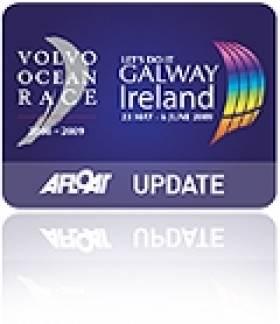Displaying items by tag: rosanna
Rosanna Davison Goes Back to Her Roots Sailing with Team Sanya
Skipper and past race winner Mike Sanderson and his crew - including Galway's Frankie Leonard - will receive a special send-off from Rosanna who won her Miss World title in the Chinese city of Sanya in 2003.
Team Sanya is the Chinese entry in the 2011-12 Volvo Ocean Race, a 40,000-mile round the world race that will finish in Galway on the 3rd July 2012. A special relationship developed between Ireland and China during the last race through the Green Dragon entry, say backers Discover Ireland, the tourism body.
Rosanna will board the yacht at 11.00am at the Royal Irish Yacht Club and will sail with the team into Dublin Port. The Eastlink bridge will lift at 1.00pm, and Team Sanya will dock beside the Cill Airne at 2.00pm. Rosanna will be on the Cill Airne from 5.30-7.00
As part of the team's promotion and it's Irish link through the Discover Ireland.com brand, the race boat and crew will call into Dun Laoghaire on Sunday, 4th September, at 5pm as previously reported on Afloat.ie.
They will overnight in Dublin and sail up the Liffey on Monday at 1pm and dock beside the MV Cill Airne on North Wall Quay, Dublin 1. A reception will be held on the MV Cill Airne from 5-7pm.
At 7pm the Team will head back out into the open sea as they start their journey to Alicante for the race start on the 5th November.
The Volvo Ocean Race is regarded as sailing's premier global race and one of the most demanding team sports in the world. The 2011-2012 Volvo Ocean Race route is: departing on 5th November from Alicante to Cape Town (South Africa) Abu Dhabi (UAE) Sanya (China) Auckland (New Zealand) Itajai (Brazil) Miami (USA) Lisbon (Portugal) Lorient (Framce) and finally Galway on the 3rd July 2012.
Mike Sanderson, skipper and CEO of Team Sanya commented on the forthcoming trip: "Our relationship with Ireland is really important to us. Frankie Leonard from Galway is our media crew member and he is going to be paramount in telling our story as we race around the world, building the profile of Ireland as the stunning tourist destination that it is. For many of our team, it is our first time visiting Ireland so we were really happy to include a pitstop in Dublin during one of our training trips."
Frankie Leonard, Team Sanya race team and the Irish Media Crew Member, added: "As the only Irishman on board I'm very proud to be part of this exciting event with Team Sanya and really looking forward to sailing into Dublin next week. My home town is Galway and finishing there in July 2012 is going to be a very special moment but this stop-over is a perfect way to help build a strong following and fan base in Ireland to develop Ireland's profile as we travel to nine other ports around the world."





























































